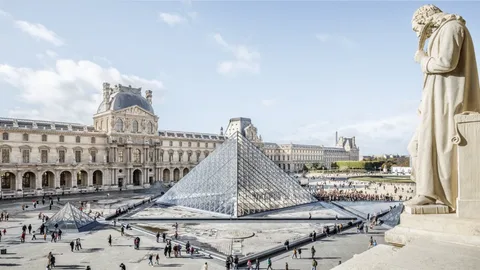In contemporary architectural design, the integration of functionality with aesthetics has become a pivotal focus. One such innovative solution that perfectly balances these demands is the use of louvre systems. These architectural elements are not only practical in enhancing ventilation but also contribute significantly to the visual appeal of buildings. This article explores how louvre systems enhance ventilation and aesthetics in modern architecture, highlighting their multifunctional benefits.
Understanding Louvre Systems
Louvre systems consist of a series of angled slats or blades that allow air and light to pass through while keeping out rain, direct sunlight, and noise. They are commonly installed in facades, windows, and rooftops and can be made from materials such as aluminum, wood, or steel. The adjustable nature of many louvre systems enables precise control over airflow and light penetration, making them a versatile architectural feature.
Improving Ventilation with Louvre Systems
One of the primary functions of louvre systems is to improve ventilation within buildings. Proper ventilation is crucial for maintaining indoor air quality, reducing humidity, and regulating temperature.
- Natural Airflow: Louvre systems allow fresh air to circulate freely, reducing reliance on mechanical ventilation systems. This promotes energy efficiency and contributes to sustainable building design.
- Weather Protection: While facilitating airflow, louvres prevent rainwater from entering the interior, ensuring that ventilation does not compromise comfort or safety.
- Thermal Regulation: By controlling airflow, louvre systems help reduce heat buildup inside buildings, lowering cooling costs during hot seasons.
Enhancing Aesthetic Appeal
Beyond their functional advantages, louvre systems have become an integral design element in modern architecture. Their sleek, linear forms add texture, depth, and rhythm to building facades.
- Customizable Designs: Architects can choose from various materials, colors, and orientations to complement the building’s overall style.
- Dynamic Facades: Adjustable louvre systems create dynamic facades that change appearance with the movement of blades, adding visual interest throughout the day.
- Privacy and Shading: Louver systems can also provide privacy and shade without completely blocking views, striking a balance between openness and seclusion.
The Intersection of Form and Function
The true beauty of louvre systems lies in their ability to seamlessly merge practical ventilation solutions with striking aesthetic enhancements. Modern architecture increasingly demands such dual-purpose features, and louvre systems rise to the occasion by delivering superior performance without compromising design integrity.
In conclusion, understanding how louvre systems enhance ventilation and aesthetics in modern architecture is essential for architects, builders, and homeowners aiming to create buildings that are both sustainable and visually captivating. These systems not only optimize airflow and environmental control but also transform ordinary structures into architectural masterpieces.


